Nikon Nikkor AF-S 16-35 mm f/4G ED VR
5. Chromatic and spherical aberration
As you can notice glancing at photos below the tested lens doesn’t have any problems related to the longitudinal chromatic aberration. However it would be difficult to expect them when it comes to an ultra wide angle lens with an aperture as fast as f/4.0. The standards aren’t raised high so the lens meets them easily.
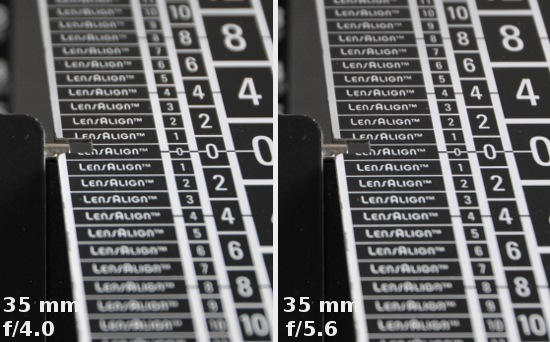 |
Please Support UsIf you enjoy our reviews and articles, and you want us to continue our work please, support our website by donating through PayPal. The funds are going to be used for paying our editorial team, renting servers, and equipping our testing studio; only that way we will be able to continue providing you interesting content for free. |
- - - - - - - - - - - - - - - - - - - - - - - - - - - - - - - - - - - - - - - - - - - - - - - -
The lateral chromatic aberration is much more difficult to correct and the Nikkor 16-35 mm VR has definitely more problems. Two graphs below show it very well – the first for the edge of the DX sensor, the other for the edge of full frame.
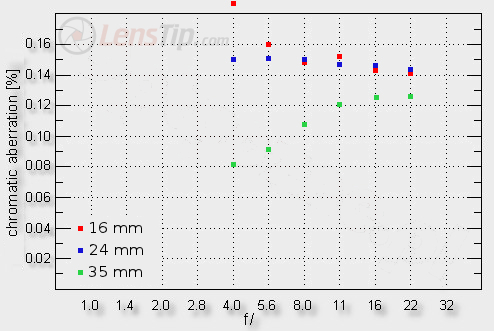
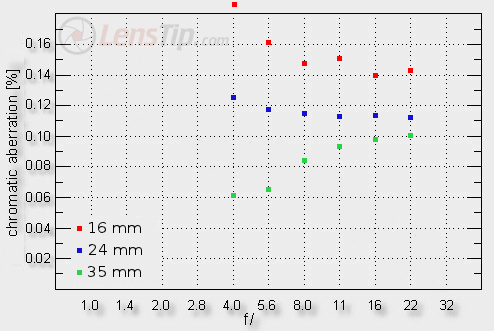
The most difficult combination of the minimum focal length and the maximum relative aperture is also the most problematic one. 0.19% is a high level and such a result definitely deserves our criticism. Even when you stop down the aberration doesn’t decrease lower. What’s more it is visible even near the centre of the frame as you can notice in the crop, shown below.
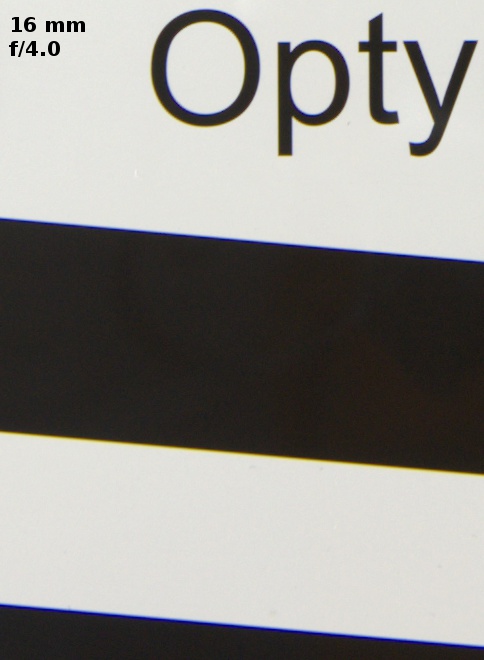 |
A bit better performance can be observed at 24 mm focal length although still it would be difficult to praise the lens for it. The results can be classified as medium with a tendency to approach high levels. Only at the maximum focal length the lateral chromatic aberration stops being a pain – but it can be hardly considered any consolation.
In this category the tested lens is defeated by the Nikkor 18-35 mm and even by the Tokina 17-35 mm which didn’t exceed 0.18%. Faring worse than a Tokina when it comes to chromatic aberration correction – I have to admit it is a kind of negative achievement…
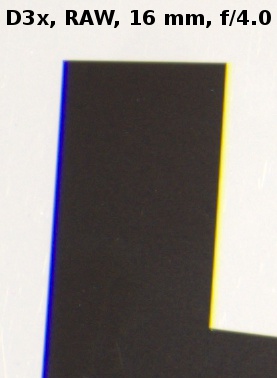 |
Spherical aberration
It is difficult to notice spherical aberration in a form of „focus shift” because the depth of field of the tested lens is quite significant, concealing it efficiently. Its influence is visible a bit in defocused images you get in front of and behind the focal point.
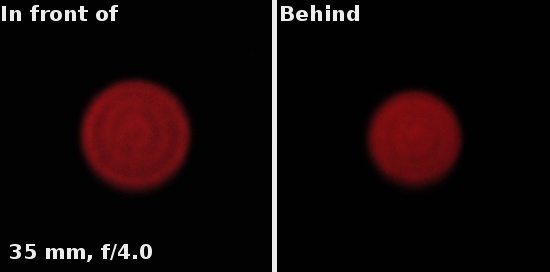
The most visible form of spherical aberration is distinct resolution decrease. The effect can be observed for every focal length, being the most pronounced at 24 mm. Let’s glance at a graph below.
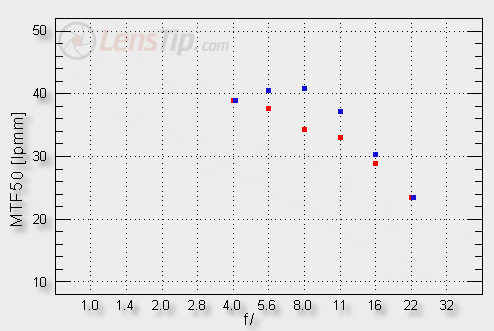
The blue dots show you the resolution graph at 24 mm, copied from the previous chapter. We created it by taking several photos by every aperture (with the help of the autofocus or manually) and choosing the best shots. The red dots concern a bit different situation. We set the best focus possible at the maximum relative aperture and switched the MF mode on; then, without changing the position of the focus, we took a series of the photos just stopping down the lens. Without any spherical aberration the image quality should have increased on stopping down but here you observe an opposite trend - the resolution quality decreases. Badly corrected spherical aberration is responsible for it; it is another of its symptoms, apart from the “focus shift”.






